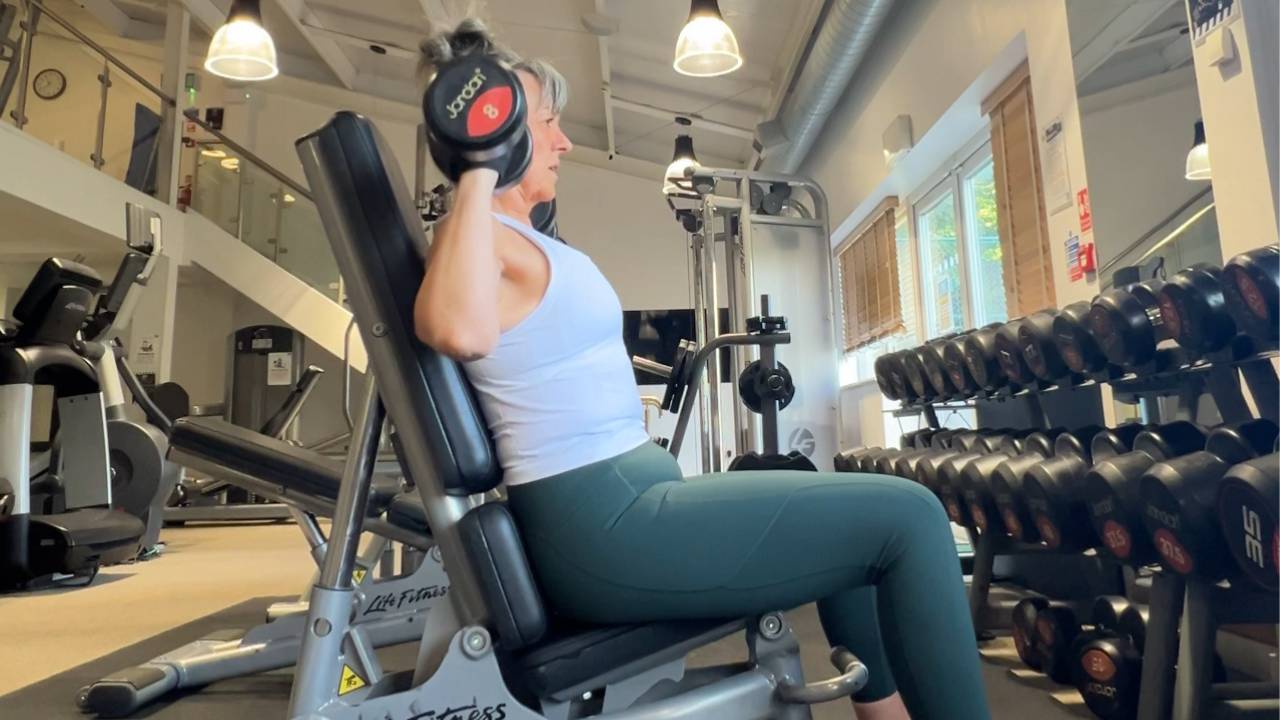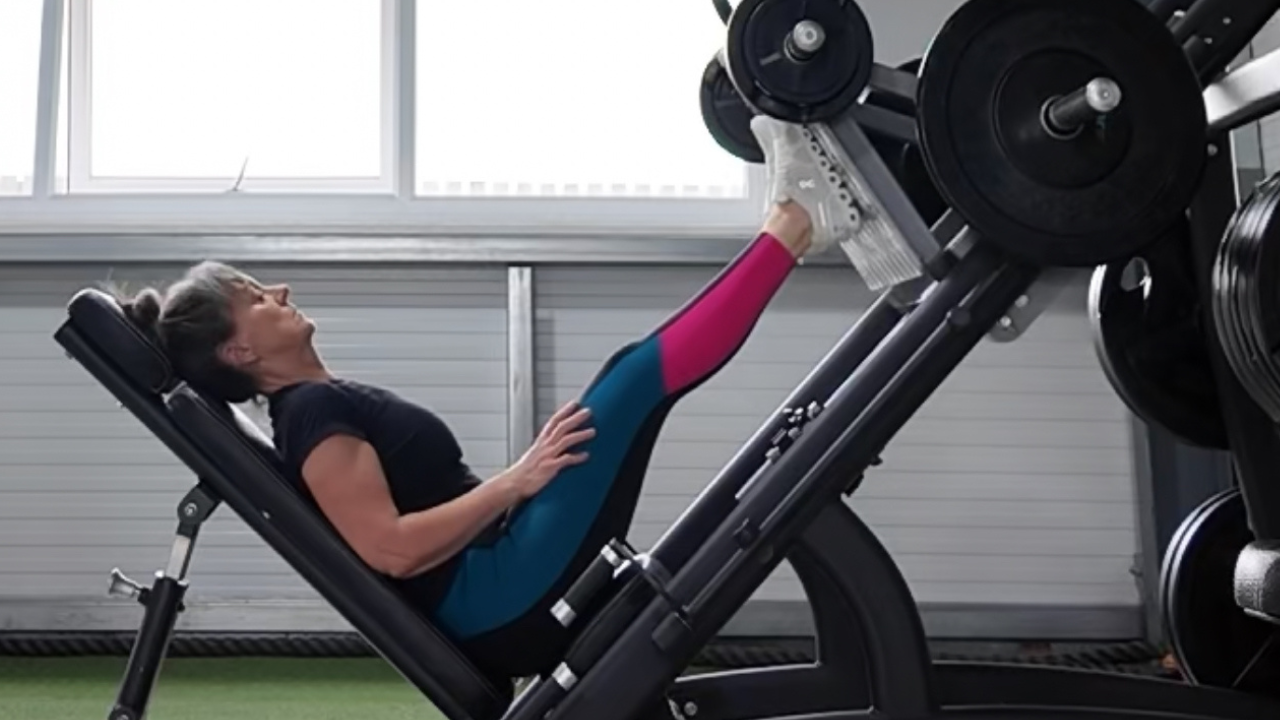Resistance Training for Women Over 50: Why and How to Get Started

Why Resistance Training Matters
The evidence is now overwhelming, maintaining our strength as we get older is crucial for continued good health and independence. Women over 50 face the challenges of muscle loss (sarcopenia), an increased risk of osteoporosis, and declining metabolism. Resistance training (often called 'strength training' too) isn’t just about lifting weights; it’s about reclaiming confidence, improving functionality, and embracing a pain-free, active future. If you’ve ever thought, "Is it too late to start?" the answer is a resounding no. It’s time we rewrote the narrative, and made it a sensible idea to all women.
Let’s take look at why you need to get started, the various types of resistance training, how to get started and dispel a few outdated myths!
The Life-Enhancing Benefits of Resistance Training
1. It Builds Stronger Bones
One in two women over 50 will break a bone due to osteoporosis. Resistance training helps to lessen our risk of this by encouraging bone growth and slowing bone density loss, which accelerates after menopause.
2. Gain Muscle, Lose Fat
As we lose muscle mass due to ageing and the various effects of menopause, our metabolism slows. Resistance training boosts our muscle mass, making it easier to manage our weight through an increased metabolism, helping us to feel stronger and more energetic.
3. Mental Resilience and Mood
Increasing physical strength can substantially improve our mental fortitude. Resistance training helped me significantly reduce my anxiety and depression as I grieved the loss of my Dad, all the while increasing my self-esteem which had been low for a number of years.
4. Chronic Conditions Risk Reduction
Regular strength training helps to manage our blood sugar by significantly improving insulin resistance; it also lowers our blood pressure, and supports heart health, making it a vital tool for longevity by helping us to avoid falling prey to common conditions suffered in later life, such as Type 2 Diabetes and heart disease.
Starting Your Resistance Training Journey
1. Assessing Your Current Fitness Level
It’s very important that you’re honest about your current fitness levels. The fact that we may have been competent at sport at school does not make us ‘fit’ in later life, as without regular practice our fitness declines rapidly.
So ask yourself the question… Can you comfortably get up from a chair without using your hands? This simple test highlights baseline strength. If you’re unsure where to start, consult a fitness professional to guide you. All Personal Trainers should conduct a full assessment before prescribing any fitness programme for a new client.
2. What Type of Resistance Training is Best?
Bodyweight: Great for beginners, and includes exercises like squats, push-ups and planks
Resistance Bands: Affordable and versatile, perfect for home workouts and travelling.
Free Weights: Dumbbells and kettlebells allow for a range of motions and muscle engagement.
Resistance Machines: Ideal to teach the body new movement patterns, ideal if you’re new to exercise.

3. Finding Time and Building Habits
Start with 2 sessions a week, and build up to 3 after the first month. Even training for just 20 minutes will make a difference. Listening to a podcast or music whilst training always makes my training sessions more enjoyable!
Ensuring a Safe and Effective Routine
1. Warming Up and Cooling Down
Your warm up prepares your body for the work ahead; it should never be skipped, especially if you're new to exercise. Spend 5-10 minutes doing some light cardio (nothing strenuous!) followed by a few dynamic stretches to warm up and prepare your muscles. On finishing your workout, cool down with some static stretches to reduce soreness and improve flexibility for all the body parts your've worked, i.e. if you've performed squats you'll need to stretch the quadriceps (front of thigh), the hamstrings (rear of thigh) and glutes (muscles in the bottom!)
2. Deciding Which Exercises to Do
• Focus on 'compound' exercises like squats, deadlifts and rows that work a number of muscles in one go.
• Include core-strengthening movements, such as planks or glute bridges as a strong core provides a safe and stable for most exercises we do.
• Balance your routine by alternating upper and lower body workouts.
3. Progression Not Perfection
Start with body weight exercises, or resistance bands. Once you are used to these it will be safe to move onto light dumbbells, but as ever, take some professional advice on how fast to advance. When you can safely perform 12 reps with ease, it's fine to increase the load (or weight) slightly. Progress at your own pace—there are no medals for progressing faster, only injuries to be suffered probably!
Myths and Misconceptions
1. "Will I Get Bulky?"
No! Women don’t have enough testosterone to bulk up like men who hit the gym six times a week. What you’ll actually gain is toned, lean muscle that boosts your metabolism and improves your body composition.
2. "I’m Too Busy"
Consistency is more important than any exercise routine. Short sessions can fit into even the busiest schedules. A 15-minute home-based circuit workout is infinitely better than nothing at all.
3. "I’m Too Old to Start"
My favourite myth! Strength training benefits everyone, regardless of age. I began my strength training journey at the age of 57, and I’ve never looked back.
Integrating Your Daily Wellness & Habit Tracker
1. Setting Goals You Can Stick To
Begin with a simple goal like "complete two workouts per week" or "perform a plank for 30 seconds." Record these in your tracker or notebook to stay accountable.
2. Track Your Progress
Log each workout, and note any challenges. Celebrate every bit of progress, which could be that you made it to the gym when you really didn’t want to go, that's a bigger achievement on some days than completing extra reps!
3. Staying Motivated
The reflection sections in my Daily Wellness and Habits Tracker will help you to monitor how you feel post-workout, and also allow you to make connections to other factors that may affect you, like poor sleep, for example. Seeing your steady progress written down will keep you motivated and consistent.
Take Your First Steps
Step 1: Consult a Professional
If you’re new to resistance training, it’s crucial that you consult a personal trainer or a gym coach. It’s easy to find the details of many types of exercise online, but only a professional will be able to help you avoid injury. I see so many posts on social media with comments such as ‘this exercise tore my rotator cuff muscle!’ and instantly I know they’ve tried mastering the move without tuition.
Step 2: Equip Yourself
If you want to exercise at home, invest in some basic equipment: resistance bands, a pair of dumbbells (a pair of 2-3kg to begin with), and a yoga mat for floor work. Comfortable, supportive shoes are essential as is non-restrictive clothing that you can move freely in and not get overheated.
Step 3: Start Small, Stay Consistent
Here's a sample workout programme to do at home (ask for guidance from a fitness professional on form):
- Warm up gently for 5 minutes with some dynamic stretching
- Bodyweight squats: 3 sets of 10.
- Push-ups (modified or standard): 3 sets of 8-10.
- Dumbbell rows: 3 sets of 10.
- Plank hold: 20-30 seconds, 3 times.
- Cool down with some static stretching
Gradually increase intensity as you gain strength and confidence in the movements. If you stay consistent you will see progress, particularly if you note it down in your tracker.
Step 4: Monitor Your Journey
Use the Daily Wellness & Habit Tracker to plan workouts, set goals, and record your achievements. Adjust your goals as needed to keep moving forward.
Step 5: Celebrate Every Victory
From lifting heavier weights to feeling more energetic, every advancement is a step in the right direction and should be celebrated! Strength isn’t just physical; it’s a mindset for life.
Conclusion: Strength is Ageless
Resistance training for women over 50 isn’t about defying or denying our age; it’s about embracing it. Every workout you complete is an investment in your future self.
Start today, track your progress, and remember: it’s never too late to become a stronger version of yourself.
Get 25% off my Daily Wellness and Habit Tracker for a limited time*
Download and complete on your tablet with a stylus, or print it off as many times as you like to complete by hand!
Stay connected with news and updates!
Join my mailing list to receive the latest news and updates.
Don't worry, your information will not be shared.
We hate SPAM. We will never sell your information, for any reason.


